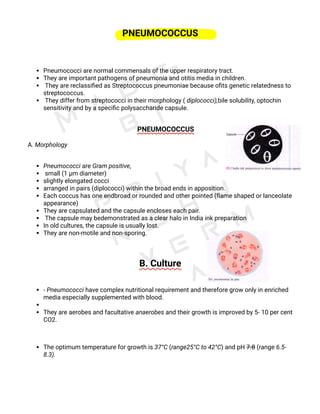Pneumococcus, also known as Streptococcus pneumoniae, are normal inhabitants of the upper respiratory tract that can cause pneumonia and ear infections. They are gram-positive cocci arranged in pairs or chains. Identification involves testing for morphology, culture characteristics like alpha-hemolysis on blood agar and bile solubility. There are over 90 serotypes classified by their polysaccharide capsule which is a major virulence factor and basis for vaccines. Pneumonia results from inhalation of the bacteria when immunity is low, often following a viral infection.








